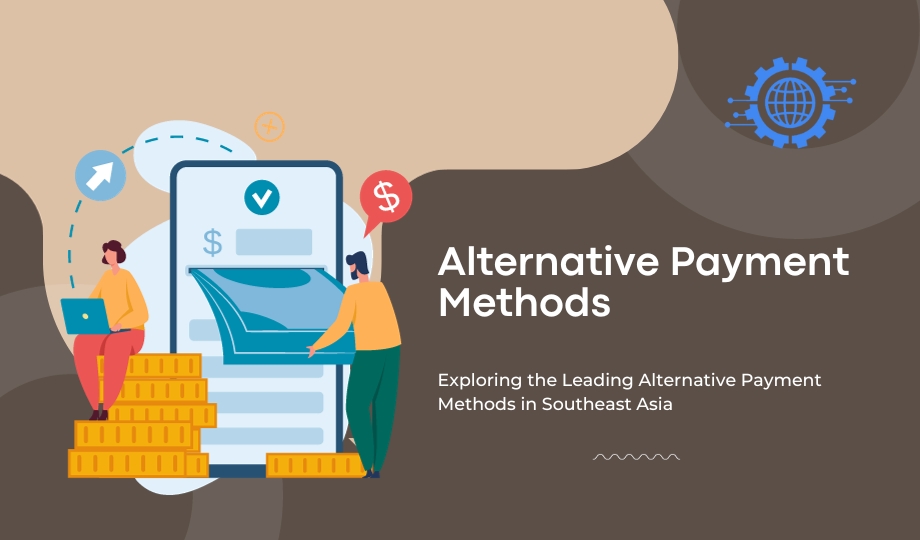The surge in the popularity of alternative payment methods has been nothing short of a revolution. With over half of global consumers now owning smartphones, nontraditional payment methods are reshaping the payment landscape. This comprehensive guide delves into the evolving world of alternative payments, offering insights into current and future trends, regional perspectives in Southeast Asia, and the most preferred alternative payment methods dominating the market today.
Understanding Alternative Payment Methods
Alternative payment methods encompass any form of payment beyond traditional cash or major credit cards. This realm is vast, encompassing digital wallets like Apple Pay and Samsung Pay, bank transfers such as iDeal in the Netherlands, prepaid cards, cryptocurrencies, and buy-now-pay-later (BNPL) services exemplified by Sweden’s Klarna. This diversity reflects the rising influence of alternative payment methods, which have already claimed 44.5 percent of total global e-commerce spending. Among these methods, digital wallets are projected to contribute 51.7% of e-commerce payment volumes by 2024.
What’s remarkable is that what was once considered a niche sector is now rapidly evolving into the mainstream in various markets. Emerging markets, in particular, are experiencing high adoption rates and remarkable innovations in this space.
The Advantages of Alternative Payment Methods
The global cross-border e-commerce market has reached new heights, with an anticipated 4.2 billion active e-commerce users by 2023. In light of this expansive international customer base, facilitating alternative payments has become a business imperative. Neglecting the integration of these payment methods is akin to leaving your wallet behind on the table.
Consumers’ payment preferences exhibit substantial variation across geographic regions and demographic segments. To optimize conversion rates and provide an exceptional user experience, businesses must offer a diverse range of alternative payment methods.
For example, while credit cards dominate online shopping in the United States, 67% of millennials do not own credit cards. In France, Cartes Bancaires is prominent, with PayPal following closely. China favors WeChat Pay and Alipay, while Latin America still relies heavily on cash, and the Netherlands prefers iDEAL.
To thrive in diverse markets and capture a broad audience, businesses must tailor their e-commerce strategies by adopting alternative payment methods.
Regional Overview: Alternative Payment Methods in Southeast Asia
Southeast Asia, as the world’s most populous region, plays a pivotal role in the surge of alternative payments. With over half of the world’s mobile subscribers residing in Asia Pacific (APAC), mobile usage directly influences the adoption of alternative payments. APAC is poised to secure a commanding 42.5% share in the global alternative payment market by 2024.
Consumers in the APAC region demonstrate a strong inclination toward mobile payments and mobile banking activities, consistently surpassing global averages. Notably, they are open to using mobile-only banks, which operate exclusively through mobile apps.
The adoption of alternative payment methods in Southeast Asia has further accelerated due to the recent pandemic. Approximately 30% of Southeast Asian consumers have reduced their reliance on traditional payment methods, seeking to minimize physical contact.
Popular Alternative Payment Methods in the Asia Pacific
India 🇮🇳
Traditional cash-on-delivery still prevails in India, accounting for 60% of e-commerce payments.
The adoption of electronic payments such as Rupay and UPI, driven by the Indian government, has led to the growth of mobile wallets.
Indonesia 🇮🇩
With a predominantly unbanked population, Indonesia’s payment landscape is increasingly digital.
Prominent alternatives include Doku Wallet, DANA, and GoPay.
Malaysia 🇲🇾
Malaysia’s credit card penetration is the second-highest in Southeast Asia.
Digital wallets like GrabPay, Razer Pay, and BoostWallet are gaining ground.
Thailand 🇹🇭
Bank transfers dominate the payment landscape in Thailand.
Convenience stores facilitate QR code payments.
Philippines 🇵🇭
The Philippines’ growing eCommerce market is embracing alternative payments.
Gcash is a popular digital wallet in the country.
Singapore 🇸🇬
Singapore boasts a thriving e-commerce market.
Digital wallets such as Apple Pay, Google Pay, and GrabPay are favored by consumers.
Vietnam 🇻🇳
Vietnam is rapidly transitioning to a cashless society.
Digital wallets, pre-paid cards, and bank transfers are the preferred payment methods.
Selecting the Right Payment Partner
For businesses expanding into international markets, partnering with the right payment service providers is crucial. Payment gateways offer varying coverage for alternative payment methods across Southeast Asia. However, working with a payment unification platform like Web Technology Expert ensures that you can connect with every payment method your customers prefer.
With the growing significance of alternative payment methods in Southeast Asia, a flexible and adaptable payment partner is essential to your business’s success in the region.

